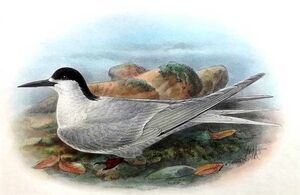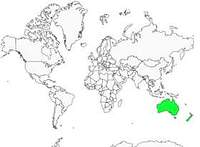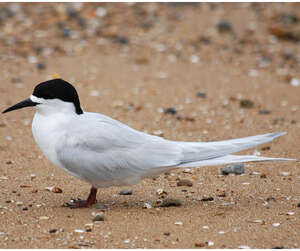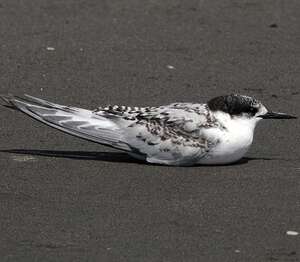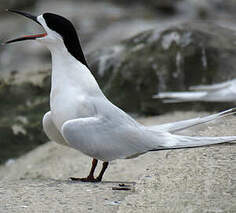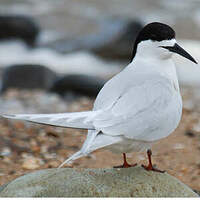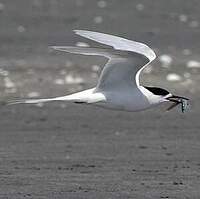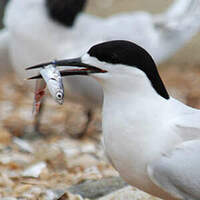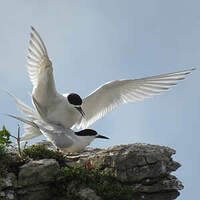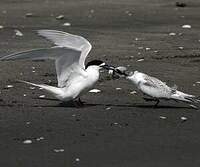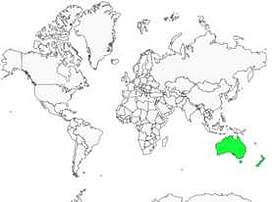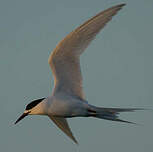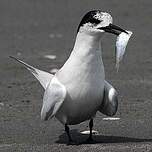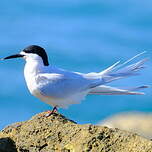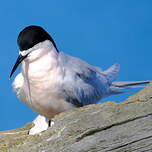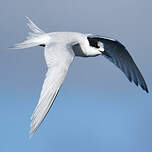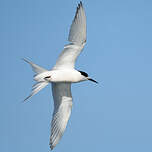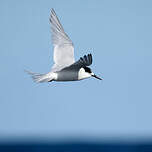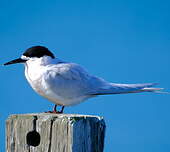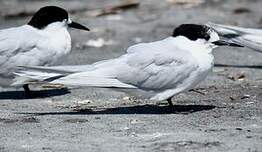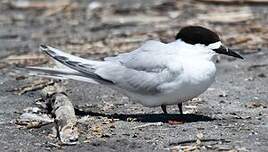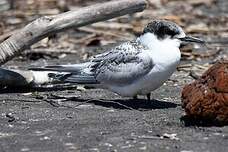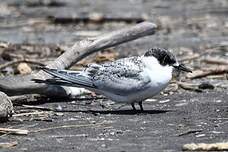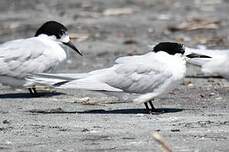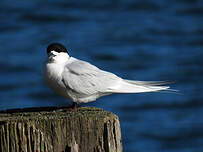White-fronted Tern
Sterna striata - Sterne tara
Identification
Similar to the Common Tern (Sterna hirundo). It is distinguished by the completely white lower forehead, black beak and legs, overall paler hue and white underside of the wings. For adults in non-breeding plumage and for juveniles, only the paler hue is truly different.
Subspecific information monotypic species
Foreign names
- Sterne tara,
- Charrán maorí,
- gaivina-de-testa-branca,
- Weißstirn-Seeschwalbe,
- fehérmellű csér,
- Tarastern,
- Sterna frontebianca,
- vitpannad tärna,
- Nyzealandterne,
- rybár bieločelý,
- rybák běločelý,
- Hvidpandet Terne,
- mustanokkatiira,
- xatrac de front blanc,
- rybitwa maoryska,
- Белолобая крачка,
- シロビタイアジサシ,
- 澳洲燕鸥,
- vitpannad tärna,
- 白臉燕鷗,
Habitat
The White-fronted Tern has a very limited range: the New Zealand coastal region where it is common (nominal subspecies) as well as the Chatham and Auckland Islands (aucklandorna subspecies) and two isolated islands between Tasmania and Australia (incerta subspecies). The White-fronted Tern is mainly a coastal species but can be observed fishing in the sea several kilometres away from the coast. It is exceptional to find it on inland waters.
Behaviour character trait
Dietfeeding habits
Reproduction nesting
The White-fronted Tern reproduces between October and February, often in colonies of hundreds of pairs.
These colonies can be installed on beaches or rocky islets. I have even seen a colony next to a parking lot near a busy road! In the sand, the nest is often a simple bowl, but on the rocks it can be a real cup made of aquatic vegetation. 1 or 2 eggs are laid. Incubation likely takes more than 3 weeks and the young leave the nest after 5 or 6 days, but do not fly until they are about 1 month old. They then depend on their parents for several months.Threats - protection
IUCN conservation status
concern
in the Wild
threatened
evaluated
There are estimated to be around 500 000 pairs (over 1.5 million individuals including non-breeders, as the species does not breed until its second year) of the non-threatened White-fronted Tern population in New Zealand.
Sources of information
- IOC World Bird List (v15.1), Gill, F and D Donsker (Eds). 2025-12-07.
Other sources of interest
 Specification sheet created on
01/08/2023 by Georges Olioso
Specification sheet created on
01/08/2023 by Georges OliosoTranslation by AI Oiseaux.net
© 1996-2025 Oiseaux.net
- Accipitriformes
- Aegotheliformes
- Anseriformes
- Apodiformes
- Apterygiformes
- Bucerotiformes
- Caprimulgiformes
- Cariamiformes
- Casuariiformes
- Charadriiformes
- Ciconiiformes
- Coliiformes
- Columbiformes
- Coraciiformes
- Cuculiformes
- Eurypygiformes
- Falconiformes
- Galliformes
- Gaviiformes
- Gruiformes
- Leptosomiformes
- Mesitornithiformes
- Musophagiformes
- Nyctibiiformes
- Opisthocomiformes
- Otidiformes
- Passeriformes
- Pelecaniformes
- Phaethontiformes
- Phoenicopteriformes
- Piciformes
- Podargiformes
- Podicipediformes
- Procellariiformes
- Psittaciformes
- Pterocliformes
- Rheiformes
- Sphenisciformes
- Steatornithiformes
- Strigiformes
- Struthioniformes
- Suliformes
- Tinamiformes
- Trogoniformes

